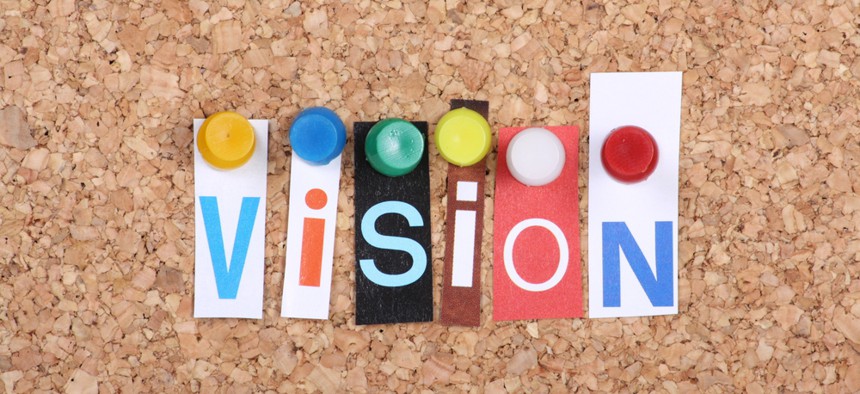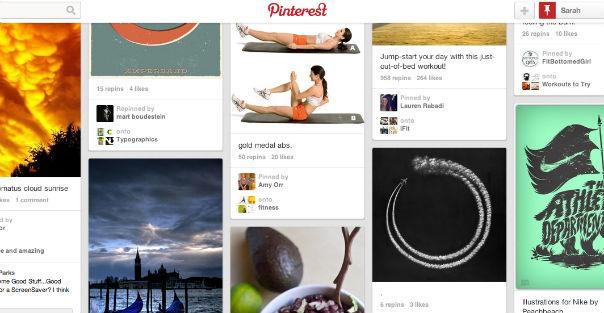
Image via Koppelkam/Shutterstock.com
What the Heck is a Vision Board (And Should I Use One)?
Creative, motivational and out of the box: the potential performance boost of vision boards.

Greatist is the fastest-growing fitness, health and happiness media start-up. Check out more wellness news at
Greatist.com
.
Remember when homework consisted of cutting out pictures we liked from magazines and pasting them on poster board, collage style? It turns out the 3rd grade art teachers of the world might be onto something.
Vision boards are a more adult version of those colorful posters, filled with inspirational quotes and images to help anyone — young or old — get motivated and improve themselves. Whether made with scissors and Elmer’s glue, or pieced together online, vision boards may help people achieve their goals. Is there real science behind these boards, or is it all in the mind?
What's the Deal?
Vision boards are all about positive thinking and channeling the power of the subconscious. Want to achieve a specific goal? Basically, the board is supposed to spark your creativity, focusing your thoughts on the goal you want to accomplish and helping articulate an objective you're having difficulty putting into words. At the very least, this visualization can help promote better choices, no matter their size. So how do you make one? The simplest approach to creating a vision board is to cut out pictures and make them into a collage. Source material can come from any where you draw inspiration, such as magazines, photographs, newspapers, and even everyday objects.

The digital age has opened up new possibilities for vision boards beyond physical objects. Social platforms like Pinterest allow users to post and repost meaningful or interesting images, with a seemingly endless supply of inspiration. Pinterest’s own image boards, full of inspirational “pins,” or images, are like digital vision boards organized around any theme imaginable. (A word of caution: It is possible that this giant, communal vision board can get overwhelming, piling on the pressure to be perfect .)
Almost. Much of the hoopla behind vision boards revolves around the so-called “ law of attraction ,” or the idea that positive thinking can help you achieve almost anything, popularized by the self-help book The Secret. Oprah promoted the book after its 2006 release and has been a big proponent of vision boards, using her media clout to add them to an arsenal of self-improvement tools like journaling. Media messages like hers push us towards being our “best selves,” and the concept of visualizing everything we want from life on a vision board fits right in. Though the hype from The Secret has died down, people continue to post on Pinterest and cut pictures from magazines. This may be because once a vision board is made, it's easy to attribute success to the board ("Oh, I got what I wanted because I made a vision board!"). On the flipside, says Greatist Expert Dr. Michael Mantell, the practice also risks fostering self-blame: Failure to achieve a certain goal might be viewed as a result of a mistep in the creation of the board instead of a number of outside factors ("My vision wasn't clear enough" or "I included too many images").
The biggest complaint about vision boards is that they simply might not work : Though positive thinking is good, we haven’t yet drawn a direct link between creating a vision board and actually making a life change or achieving a specific goal. However, a recent study on weight lifters showed brain activity in the same areas when they lifted and when they simply thought about lifting, giving us some hard science behind the power of flexing mental muscles and spending time thinking about what we want to achieve — at least when it comes to feats of strength. Tactics of positive thinking and visualization have long been used in the field of sports psychology, using imagery to give athletes a competitive edge.
Another issue with vision boards is that they can perpetuate inaction and daydreaming instead of hard work and motivation to get a job done. A study on students preparing for their mid-term exams showed that students who visualized positive results actually studied less and scored lower grades.
Still, it’s important to remember that vision boards serve as an inspiration, not a magical golden ticket to success. Vision boards can be a way to identify a goal and visualize a way to achieve it, even if achieving takes a little more than arts and crafts. Regardless, spending some time imagining what you want has been shown to improve performance and delineate goals, whether that end product makes dreams come true or not.
- The New Key to Office Productivity? Walking
- 22 Ways to Beat the Afternoon Slump
- Millennials Are the Most Stressed, Study Says
Image via Andrea Danti/Shutterstock.com
Image via Koppelkam/Shutterstock.com
NEXT STORY: When is a Federal Program Actually a 'Program'?






